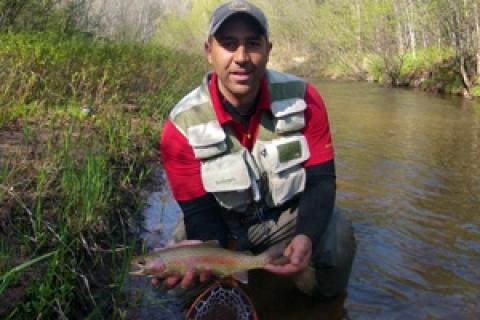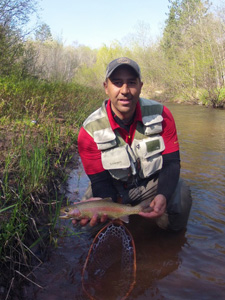
 After a successful memorial weekend on the local rivers I frequent, I can't help but think of a special nymphing technique that could change how some fly anglers approach small streams. Understanding that not everyone has access to blue ribbon trout streams in their backyards, some fly fishing techniques lend themselves better to small overgrown streams, like tight line nymphing.
After a successful memorial weekend on the local rivers I frequent, I can't help but think of a special nymphing technique that could change how some fly anglers approach small streams. Understanding that not everyone has access to blue ribbon trout streams in their backyards, some fly fishing techniques lend themselves better to small overgrown streams, like tight line nymphing.
When I refer to small streams, I mean waters less than 30 feet across at the widest point. These small streams might be lacking in size but in most cases, not in fish. Being that they usually are off the beaten path and relatively hard to fish, fly anglers don't spend much time on these waters, leaving the fish relatively unpressured.
On these streams, traditional nymphing setups and techniques just don't cut it. In the skinny water, large bright indicators and long leads will either spook fish or get tangled in the brush and trees. Tight Line nymphing is a technique that is made for these exact conditions, allowing the angler to detect strikes with minimal gear or process. This method allows the fly angler to feel strikes with the rod and line, rather than being seen. While tight line nymphing is not as easy as indicator fishing, with a little practice it can produce big results.
The basics of this technique start with the setup. Any standard nymphing rod (9-foot) will work for this type of fishing, coupled to a floating line. The leader should be light (4- to 6-pound test) and around 9 feet in length.
Understand that the absence of the indicator is not a mistake. This technique does not utilize an indicator in the process. To fish using the tight line nymph setup, the angler should cast the nymph pattern upstream of the respected target and mend the line as soon as the fly hits the water to create a dead drift. As the fly drifts, lightly raise the tip of the rod until the line comes tight to the fly. Follow the fly with your rod tip and guide them downstream throughout the drift with your rod. You should start the drift with your rod pointed directly upstream, and finish the drift with the rod pointed downstream. With the flies being weighted you should be able to feel the fly ticking along the bottom during most of the drift. If the fly stops or you feel weight on the line, set the hook immediately.
Using the tight line nymphing technique will create new opportunities for fishing in small streams and off the beaten path. It is well worth the time to perfect this method of fly fishing.
- 11064 views

